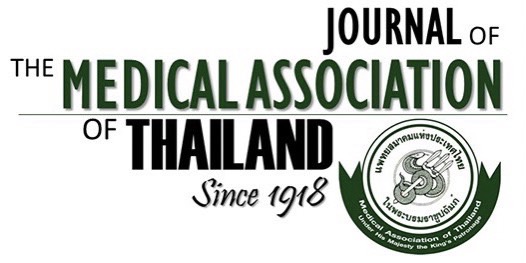Steroid Responsiveness in Adults with Primary Immune Thrombocytopenia: a Single Center Study
Nisa Makruasi MD*, Namsai Phukiat MD*
Affiliation : * Division of Hematology, Department of Medicine, Faculty of Medicine, HRH Princess Maha Chakri Sirindhorn Medical Center, Srinakharinwirot University, Nakhon Nayok, Thailand
Background : Primary immune thrombocytopenia (ITP) is a common life-threatening condition of a benign hematologic
disease. The standard treatment is corticosteroids. Dismal study to determine response between groups of steroids in
Thailand. Assessing the steroid response of each form of steroid may improve the outcome of ITP.
Objective : The objective is to determine the results of steroid administration in newly diagnosed or patients with relapsed
primary ITP by comparing the response between prednisolone and dexamethasone.
Material and Method: The study is a retrospective, descriptive study. We have reviewed medical records of thirty-nine
primary ITP patients taken between the years of 2007 to 2014 at the HRH Princess Maha Chakri Sirindhorn Medical Center.
Data collections were of the personal demographics, disease characteristics, treatments, and the outcomes of treatments. The
statistical analyses include the percentages, mean scores, and standard deviation. The Chi-square and Fisher’s exact
correlation were used to identify the categorical variables and to assess between the independent variables and outcomes. The
ANOVA test confirmed the continuous variables. A p-value <0.05 was considered statistically significant.
Results : Data from the 39 patients have shown that the median age was 40.6 years (15 to 85 years). The female gender was
a predominant factor. Twenty-seven patients (69.2%) were newly diagnosed ITP. Most of the patients (84.62%) experienced
a history of bleeding in which skin bleeding was the major type (60.6%). There were 15 (38.5%) and 24 (61.5%) patients
treated with prednisolone and dexamethasone, respectively. The history of bleeding (p = 0.02) and low platelet counts prior
to treatment (p=0.04) were seen predominantly in the dexamethasone group when compared to the prednisolone group. The
accumulation of levels of steroids were found to be higher in the dexamethasone group during the first week (p = 0.00), but
no differences were seen between 2 and 4 weeks of treatment (p = 0.20, 0.14, and 0.19). The initial response to therapy in the
dexamethasone group was 77.2%, and 88.9% in prednisolone group. However, the 1 to 4 week treatment outcomes were not
different between either of the groups. Gender, age (less than 18 years), diagnoses of being a new case or a relapsed case and
the type of corticosteroid have shown no effects on the outcomes of the treatments.
Conclusion : Dexamethasone and prednisolone provide equal clinical outcomes for the patients with ITP during the first
month of the therapeutic regimens.
Keywords : Idiopathic thrombocytopenia, Response, Dexamethasone, Prednisolone



